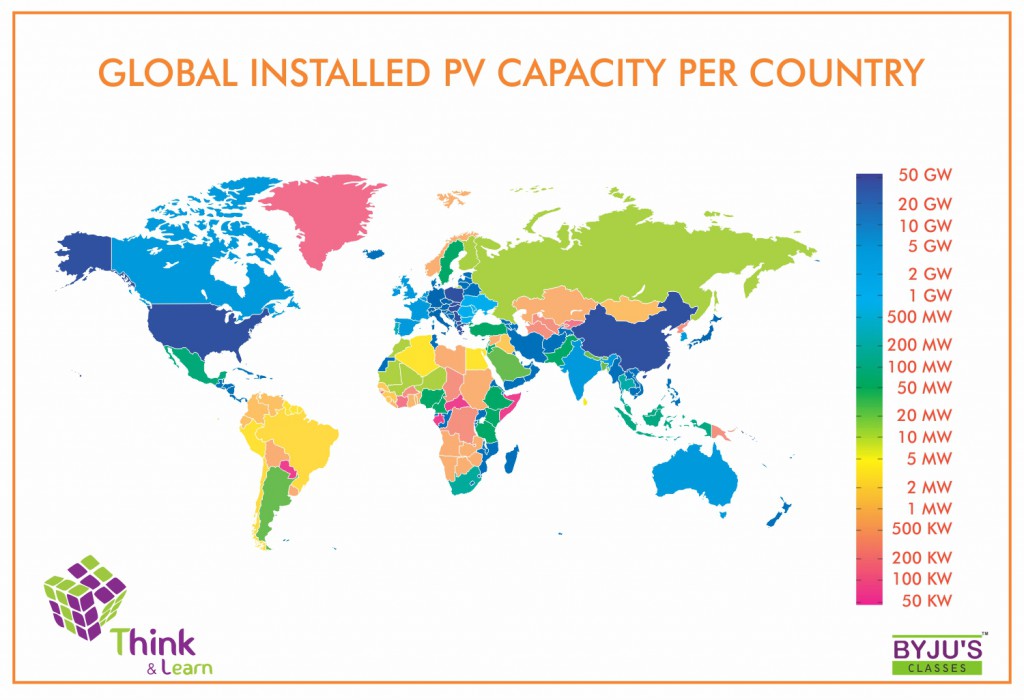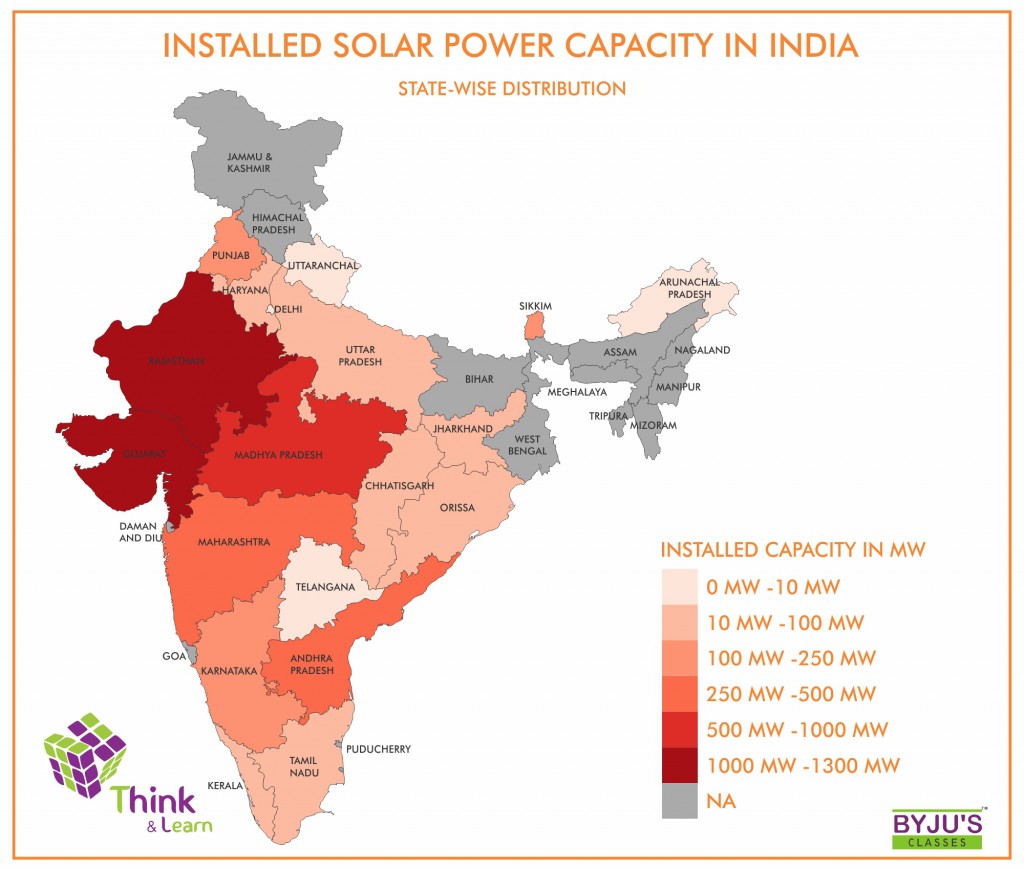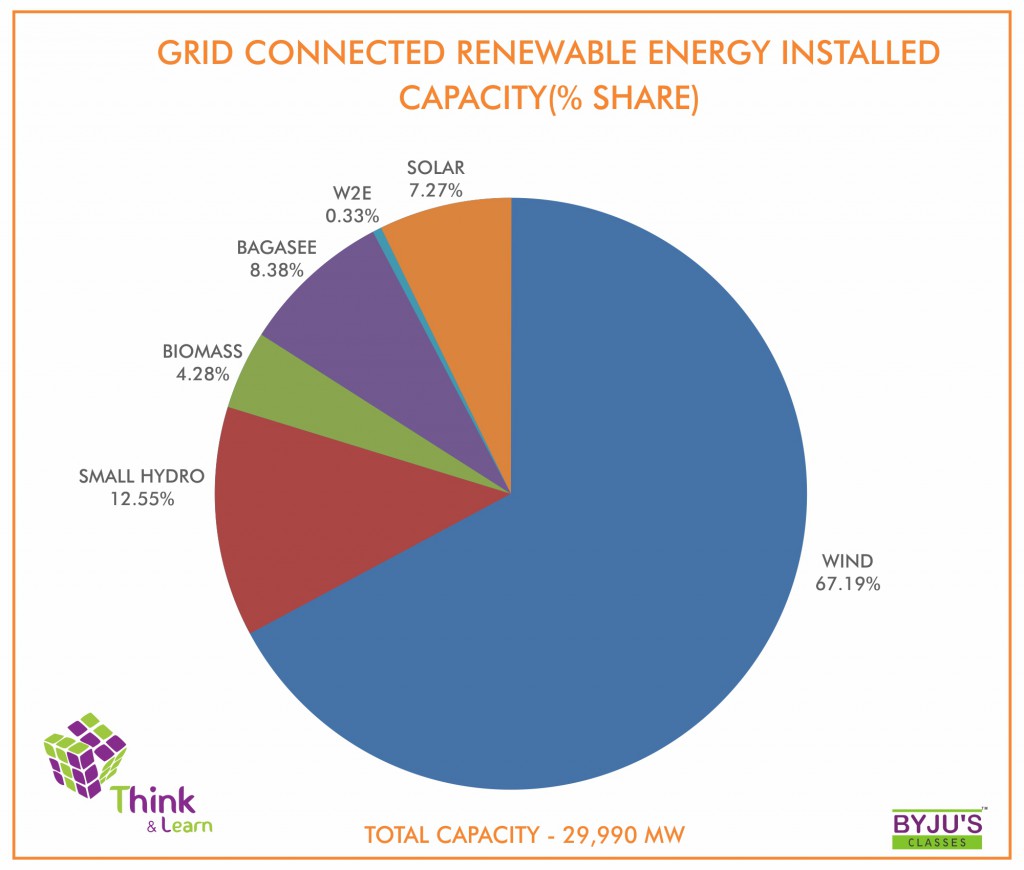ISA Latest Update: The International Solar Alliance has released ‘Ease of Doing Solar Report 2020’ on 24th February 2021. Additionally, ISA is set to launch the World Solar Bank in UNFCCC COP26 scheduled in 2021.
India and France have been re-elected as the President and Co-President of the International Solar Alliance (ISA) for a term of two years at the virtual third Assembly of ISA.
- The Assembly approved institutionalizing ISA’s engagement with the private and public corporate sector through the Coalition for Sustainable Climate Action (CSCA).
- Various solar awards were confered like – Visvesvaraya award for recognizing the countries with a maximum floating solar capacity, the Kalpana Chawla award for the outstanding contribution of scientists and engineers working in the field of solar energy and the Diwakar award recognizes organizations and institutions that have been working for the benefit of differently-abled people and have maximized the use of solar energy in the host country.
- In the wake of the global pandemic, ISA responded by setting up ISA CARES (like PM-CARES in India), an initiative dedicated to the deployment of solar energy in the healthcare sector. The initiative aims to solarize one primary health sector in each district of the target member countries.
- The ISA has recently signed a tripartite agreement with the World Bank and the Government of India and is now actively involved in preparing a vision and implementation plan for “One Sun, One World, One Grid” Initiative to harness the power of interconnected grids for enabling energy transition to a low-carbon world.
International Solar Alliance – ISA PDF Download PDF Here
The International Solar Alliance (ISA) is an initiative proposed by our Prime Minister Narendra Modi and was launched by him at the UN Climate Change Conference in Paris along with the President of France. It was launched on 30th November 2015. The topic, ‘International Solar Alliance’ comes under Mains GS-II and is important for IAS Exam.
Aspirants can check the following links to align their preparation for UPSC 2023 examination:
|
Ease of Doing Solar Report 2020 – Findings
The International Solar Alliance’s Ease of Doing Solar Report 2020 has covered 80 countries. It identifies the high solar energy performers in 2020.
- The report mentions India as one of the world’s top markets in solar energy. The other countries mentioned in the report as one of the top markets are
- Brazil
- Saudi Arabia
- United Arab Emirates
- The countries with moderately favourable conditions for the solar market are:
- Rwanda
- Sri Lanka
- Nigeria
- Argentina
- Egypt
- The potential markets are found in the following countries:
- Bangladesh
- Ethiopia
- Zimbabwe
- Mozambique
- The seven key indicators evaluated in the report are:
- Macroeconomy
- Policy enablers
- Technical feasibility
- Market maturity
- Infrastructure
- Financing ecosystem
- Energy imperatives
Aspirants can get all the latest international organizations’ reports from the linked article.
What is the International Solar Alliance (ISA)?
PM Modi said, “The Sun is the source of all energy. The world must turn to solar, the power of our future”. It is an alliance of the “sunshine countries” i.e., the countries lying in between the two tropics – Tropic of Cancer and Tropic of Capricorn with an objective of efficient utilization of solar energy. The alliance was formed with the intent to reduce the dependence on non-renewable sources of energy like fossil fuels. Modi referred to the sun-rich countries as “Suryaputras” and spoke about the huge potential of these countries to make use of the abundant natural resource, solar energy.
- The International Solar Alliance is a group of nations that lies within the Tropics (Tropic of Cancer and Tropic of Capricorn) and receive sunshine for more than 300 days.
- It is a platform for the collaboration of sunshine countries in the domain of energy security.
Why International Solar Alliance? 
- The energy that comes from the Sun in a day is enough for the entire globe to use for a whole year, however, we are not able to capture the entire energy that comes.
- Most of the sunshine countries are poor and the least developing. Hence, solar power becomes critical for energy security.
- The underlying rationale for ISA is to “ensure access to affordable, reliable, sustainable and modern energy for all”,
- It also plans to increase the share of renewable energy substantially by 2030. By 2030, it envisages enhancing international cooperation to facilitate access to clean energy research and technology, including renewable energy, energy efficiency, and advanced and cleaner fossil-fuel technology.
- Developing solar projects in silos is not financially viable, despite the involvement of prominent financial institutions such as AIIB, World Bank, NDB and private and public investments towards this.
- Absence of established renewable energy policy.
- There is no proper ecosystem that creates a willingness to buy and set up renewable energy; there is no proper integration method with conventional energy.
- Hence, the focus of ISA will be on policy, ecosystem, and integration concerning solar energy.
 Financing options of ISA
Financing options of ISA
- The private sector is willing to contribute $500 million and the public sector another $500 million. This gives ISA financial sustainability.
- ISA has the potential to popularise new financial mechanisms that are popular now in India such as masala bonds as well as green solar bonds, for raising cheap money in other nations also.
Check out the following links for assistance in the preparation of the upcoming UPSC Civil Services exams-
What is India’s Role in ISA? 

- India will be one of the largest markets and its domestic policy (to build 100 gigawatts) has sent signals to developers and financiers.
- The country has committed an operational solar power capacity of 100 GW by March 2022. This initiative could be a shot in the arm for India’s energy security.
- Headquarters of ISA will be in India.
- Interim Secretariat of the ISA in National Institute of Solar Energy (NISE), Gwalpahari, Gurgaon, has been inaugurated.
- India has committed a corpus of 100 crores.
- India will also give secretarial assistance of 225 crores for the next five years.
- The government of India has offered training support for ISA member countries at NISE and also support for demonstration projects for solar home lighting, solar pumps for farmers, and other solar applications.
What are the advantages of ISA?
- It will give the desired push towards clean energy when the world is reeling under the impact of climate change due to pollution from energy generating plants like coal etc.
- The Alliance has a 24×7 Solar Cyber Centre. This will give open access to all nations for advice and information on many projects and financial innovation.
- The Alliance can also play an advocacy role in asking the financial institutions to offer a part of their lending for solar energy. This is like what the Reserve Bank did in India – up to 15 crore investment in the field of renewable energy is a priority sector lending. And, up to 10 lakh is a priority sector lending for rooftop solar panels.
- Advantages for India:
- This could position India as an energy leader of sun-rich developing countries
- It showcases India as a strong contender internationally and could generate job opportunities of a global nature.
- The ISA could be the beginning of more macro-level analysis and discussions of international energy markets, rather than just focussing on Indian policies or domestic policies.
- India lacks adequate infrastructure for solar energy. Further, the cost of solar power is not yet commercially viable. To reach its desired target of 100GW of solar power, ISA can help fund the capacity addition and make solar power commercially viable.
- It can also adopt best practices in renewable energy
How is ISA different from other such organizations?
- ISA is the first organization in the world, which will have a sole focus on solar energy, unlike IEA (International Energy Agency), IRENA (International Renewable Energy Agency) and REEP (Renewable Energy and Energy Efficiency Partnership), which work on other renewable sources of energy as well.
- The United Nations is a partner for ISA, unlike in other organizations.
- ISA is tilted more towards action rather than only scholarly research and theory building.
Possible Challenges:
- The Alliance wants to create a forum where an exchange of experiences can occur to deploy solar energy while agreeing that access to energy technology and finance are the biggest obstacles in achieving energy security.
- In several international processes, the ultimate objective lies neglected because funds have been utilized in finding consensus in conferences. Therefore, ISA should be careful about not going on that path.
- There could be disagreements on the business models like- from where to procure components and satisfying competing claims of domestic and international players could be a challenge.
- Further, there is no clarity on a business model about how it can help make solar power reach “grid parity”.
Road map to the Future:
- India could potentially change that by making all ISA programs pointed and crisp such as the idea of linking France’s funds with PM Modi’s Smart Cities Programme to increase solar energy in public lighting in the proposed smart cities.
- Funding for capacity addition should be made on a priority basis.
- Successful models of a clean energy system must move away from fossil fuels (no matter how slowly) towards renewables. Once subsidies are slowly removed from fossil fuels, that revenue should be used to subsidize renewable energy in a fashion similar to a feed-in-tariff.
- The feed-in-tariff should also be eventually removed once solar prices become competitive enough, failing which the tariff becomes counter-productive and a fiscal burden.
International Solar Alliance – ISA PDF Download PDF Here
Approach to Civil services Exam: GS Paper 1:
- Renewable energy resources, location of solar power plants
- Implication on lifestyle
- Knowledge of the sun or its importance (not solar energy per se but the position of sun, planets, etc) to Indians in ancient and medieval India(also a probable prelims topic)
GS Paper 2
- 7th Schedule of the Constitution– Electricity as a concurrent subject
- Article 253- The obligation of the states to adhere to international conventions, treaties and agreements
- India’s energy policy- policy interventions by the government
- Multilateral fora
GS Paper 3
- Investment models
- Clean energy
- Energy pricing
- Energy security
- Sustainable development
GS Paper 4
- The ethical component of development
- Attitudinal aspects of energy use- clean technology, etc.
- Possible case studies on Industrial pollution and its impact
Candidates can read similar topics linked in the table below:
| Paris Agreement | Chabahar Port | Australia Group |
Frequently Asked Questions on International Solar Alliance
Q 1. What is the objective of ISA?
Q 2. When was ISA established?
| IAS Toppers Marks Subject Wise | UPSC 2023 Calendar |
| Documents Required for UPSC Exam | Language Papers in UPSC – Tips to Study |
| UPSC Admit Card | UPSC Eligibility Criteria |
Comments